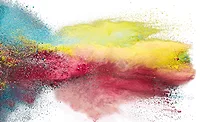BASF to Phase Out Lead-Chromate Pigments
LUDWIGSHAFEN, Germany - BASF announced that the company plans to stop making lead-chromate pigments by the end of 2014 and will concentrate on developing and producing alternative products. The pigments, for the yellow and red color range, include those sold under the brand names Sicopal®, Sicotan®, Paliotan®, T-Shade®, Paliotol®, Paliogen®, Cromophtal®, Irgalite®, Cinquasia®and Irgazin®.
“We have for years been in the possession of a large portfolio of organic and inorganic pigments that represent excellent alternatives to lead-chromate pigments,” said Stefan Sütterlin, head of the Business Management Pigments of BASF in Europe.
Because a 100-percent substitution for lead-containing pigments does not exist, customers in the coatings industry have been resistant to change. “We are going to assist our customers, if they want us to, with the change-over,” said Joachim Straßner, head of marketing for pigments for industrial and decorative coatings of BASF in Europe. “This means that we will help them plan their exit strategy, agree on the quantities that are to be phased out and the technical changeover,” said Straßner.
BASF is one of the largest pigment producers worldwide, with a unique product and technology portfolio. One of the oldest product groups is lead chromates, which are widely used due to weather-fastness and color-strength properties. However, their use is becoming more tightly controlled. In Europe, the process for approval of these substances under the European chemicals regulation REACH has begun. As of May 2015, lead-chromate pigments will no longer be allowed into circulation without regulatory approval.
BASF produces lead-chromate pigments exclusively on its site in Besigheim, Germany. This is where the future production of alternative products will gradually be developed and expanded.
Looking for a reprint of this article?
From high-res PDFs to custom plaques, order your copy today!




